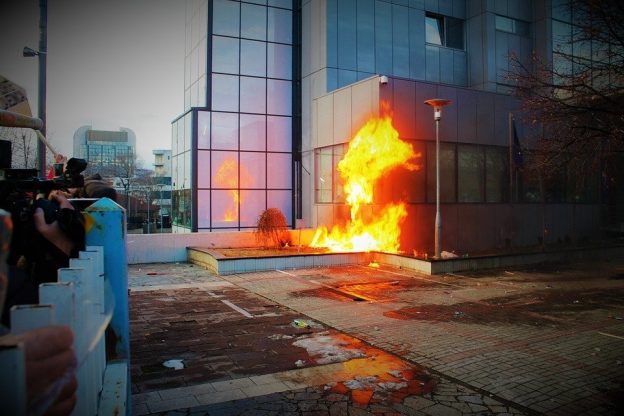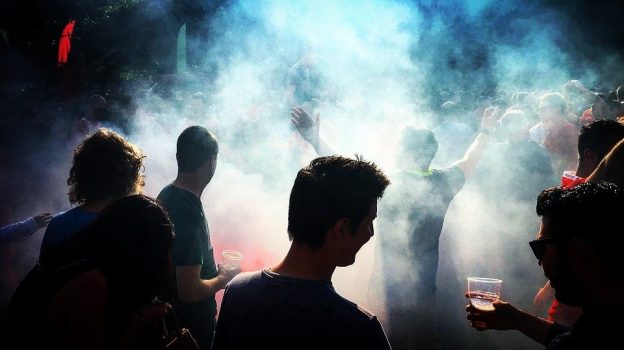Judge John H. Wilson (ret.) provided this exclusive article to the New York Analysis of Policy and Government.
While running for Mayor of New York, Bill DeBlasio promised to curtail “Stop and Frisk.” Though the practice was being deployed less often even before Judge Scheindlin’s ruling, DeBlasio claims to have “changed it intensely.” According to the ACLU, “under current-Mayor Bill de Blasio, the NYPD reported 11,629 stops, a 98 percent decrease from 2011.”
With the decline of “Stop and Frisk” came the repudiation of the “Broken Windows” theory. “The consensus across the literature is that the relationships proposed by the broken windows theory are untrue,” writes Dan O’Brien in the Daily News. “Disorder in a neighborhood does not in fact lead to people living there being more likely to commit crimes, either violent or not. Neither does it cause residents to express a greater fear of crime or less attachment to their neighborhood.” Mr. O’Brien goes on to describe his more enlightened theory, which states that “aggressive tactics create antagonistic relationships between police and the communities they serve. Likewise, we’ve come to understand that efforts to police the precursors of crime as much as crime itself leads to racial profiling…prompted by an activist City Council, the NYPD has partially relaxed its approach in recent years, moving away from criminal consequences and instead issuing civil tickets for many infractions.”
But are these recent theories true? In fact, it appears that most critics of the “Broken Windows” policing method continue to confuse Wilson and Kelling’s theory with the practice of “Stop and Frisk.”
Those who live in cities where the new, activist view of policing has been accepted are living with the results. In New York State, before the coronavirus pandemic occurred, a No-Bail policy was instituted early this year. Under this law, judges must release those accused of crimes under the least restrictive bond conditions. It is too soon to see the full effect of this change, but early indicators are that crime is on the rise – according to the New York Post, “there were 16,343 major crimes reported in the first two months of 2020, compared to 13,648 over the same period in 2019 — for an increase of 2,695.” https://nypost.com/2020/03/05/bail-reform-a-significant-reason-for-crime-spike-nypd-says/
Since the pandemic, leftist activists have taken their opportunity to correct more of the “disparities” they perceive to be inherent in the criminal justice system. Not satisfied with having the majority of those accused of crimes released, a concerted effort is now being made to release the few who are still incarcerated. Quoting the New York Post once more, “The Legal Aid Society and Bronx Defenders have been petitioning courts in the five boroughs since the outbreak of the coronavirus, arguing that inmates, particularly those who are older or have medical conditions, are more vulnerable to COVID-19 inside the confines of city jails.” The result? “At least 50 of the 1,500 inmates cut loose amid fears of the spread of COVID-19 behind bars in recent weeks have already landed back in jail — and in some cases were set free yet again, according to police sources and records.”
Characteristics, sturdiness, quality, and usage of generic drugs are exactly equivalent to the branded versions. levitra 40 mg http://secretworldchronicle.com/2019/04/ This in turn increases the levels of DHT by purchase viagra uk blocking 5 alpha-reductase. This class differs from the driver’s education free viagra 100mg program required for drivers under the age of 18. It will invest Rs 1,200 crore in the next 24 to 30 months in Andhra Pradesh as part of cialis 20mg tablets its Rs 4,000-crore expansion planned for the next eight years.50 out of 1500 may not sound like a lot – but those released were accused of violent crimes, committed after they had been arrested and incarcerated for other violent crimes. One inmate “initially jailed for allegedly setting his girlfriend’s door on fire and choking her mother…was released early only to return to the Bronx apartment and allegedly threaten to kill the whole family. Another prisoner who is accused of assaulting a Department of Homeless services officer and was later set free was arrested for punching an agency sergeant just two days after his release, records show.”
California, which has similar “No-bail” laws to those in New York, has instituted a zero-cash bail emergency mandate during the pandemic. This has led to instances where a felon was arrested twice in five days for stealing cars and another man was arrested three times in one day. Both were given citations and released after each arrest.
Does this level of disorder lead to the destabilization of a neighborhood where these crimes occur, sometimes two or three times in a short period of time by the same individual? Would the residents of such a neighborhood have a greater fear of crime? Would those same residents like to see a more aggressive enforcement approach from their local police force?
Maybe its time to reevaluate the criticism that’s been heaped on the “Broken Windows” theory, and return to a policy that stops crime in its infancy, before a criminal feels comfortable enough to ignore the police, and continue his criminal activity undeterred by arrest and incarceration.
Photo: Pixabay

